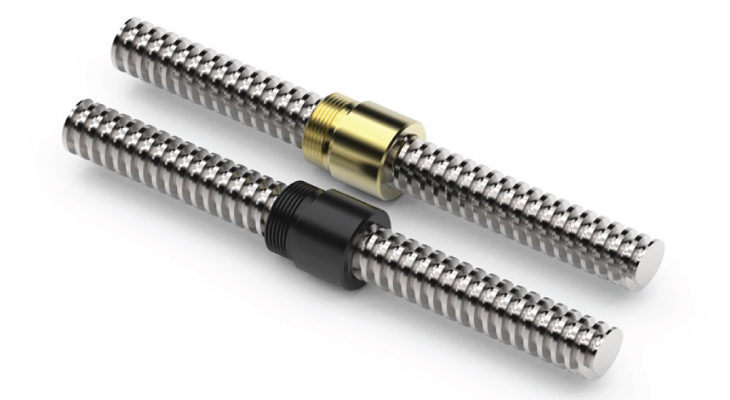How to Evaluate Acme Screw Assembly Loads

Configuring an acme screw assembly that will not only perform but endure the demands of a linear motion application requires a thorough understanding of the load requirements. Evaluating your loading conditions extends beyond the load you want to move and the distance you want to move it - it includes the effects of your application on the screw assembly itself. Understanding and assessing the forces that influence lead screw performance is paramount to configuring a screw assembly that is effective, reliable, and long-lasting.
Acme lead screw assemblies can be subjected to several loads in different ways, known as load classes. Improper loading may cause decreased lead screw efficiency, shorter service life, or failure. This article will examine acme screw assembly load types and categories.
Understanding Load Types
Five primary load types can affect acme screw assembly performance:
- Tension Load – A tension load describes a situation during which the load tends to “stretch” or pull the screw from end to end. Some degree of tension loading is usually acceptable for acme lead screw assembly operation. Tension loads are always present with lead screws that utilize a rotating acme nut design as the screw is continually being pulled.
- Compression Load – A compression load describes a scenario during which the load tends to “squeeze” or compress the screw from the ends toward the middle. Like tension loading, some level of compression loading may be permissible. Some systems will have a small amount of tension and compression loading as part of regular operation. The acme lead screw must have enough column strength to accommodate compression loading because the acme lead screw may buckle when compression loading exceeds column strength.
- *Thrust Load – A thrust load describes a load that is parallel to and concentric with the acme lead screw. This is the preferred type of load for proper lead screw assembly performance because the load follows the direction of the screw. Achieving a thrust load situation is the optimal goal when designing an acme lead screw assembly.
- Overturning Load – An overturning load describes a loading condition when the load tends to rotate the nut radially around the longitudinal access of the screw. A moment load is a type of overturning load that tends to overturn or bend the axis of rotation in an angular direction. It’s best to avoid this loading condition in an acme lead screw assembly if possible because it can unevenly load the nut, which can cause binding and uneven wear.
- Side Load – A side load, also known as radial load, describes a load that influences the nut radially, perpendicular to the lead screw axis. Sidel-oading will reduce the critical speed, may permanently bend the lead screw, and should be avoided. A common cause of side loads is when the end supports of a screw assembly are not correctly aligned with the nut attachment point.
Assessing Load Classes
In addition to the types of loads that affect lead screw assemblies, load classes describe how the loading condition is applied. These are:
- Static Load – A static load is a loading condition involving actions having high acceleration. In the context of an Acme lead screw assembly, this relates to the maximum thrust load, including shock, that can be applied to an acme nut assembly.
- Dynamic Load – A dynamic load varies very slowly. For acme lead screw assemblies, dynamic loads also relate to the maximum recommended thrust load applied to a nut assembly while in motion.
- PV Load – A PV load is a loading condition caused by a sliding load that causes heat buildup due to friction. The heat generated relates to the pressure (P) on the acme nut and the surface velocity (V) at the primary diameter. How severely a PV load will influence an application depends on the material used for the screw assembly, the pressure on the acme nut, and the surface velocity at the primary diameter.
Loads
Choosing the correct acme lead screw assembly requires a thorough understanding of the different loading conditions and the specific loads for your linear motion control application. Helix Linear Technologies has the engineering expertise necessary for thoroughly interrogating your unique load environment and the advanced manufacturing technologies that you need to configure the proper acme screw assembly for the linear motion control requirements of your application.
To learn more about how Helix can help you configure the best acme screw assembly for your particular loading conditions, download a copy of the Helix Precision Lead Screw Catalog


